Thanks, @stefan, for your excellent answer that has both taught me about plotly objects and inspired me to take your concept further.
I've created this function with the following features:
- It translates your logic into a function that uses the plotly object as an input.
- It applies the purrr library.
- The function accepts an optional second parameter (.new_legend) that allows overwriting the legend entries.
The code is certainly longer than your code, though it's elongated by the function, assign_leg_grp, that enables overwriting and also by my "spread out" style.
library(plotly)
library(ggplot2)
library(purrr)
library(stringr)
p <- mpg %>%
ggplot(aes(year)) +
geom_ribbon(aes(ymin=cty, ymax=hwy, fill = manufacturer), alpha=0.2) +
geom_line(aes(y = hwy, col=manufacturer)) +
facet_wrap(~class)
gp <- ggplotly(p = p)
clean_pltly_legend <- function(.pltly_obj, .new_legend = c()) {
# Cleans up a plotly object legend, particularly when ggplot is facetted
assign_leg_grp <- function(.legend_group, .leg_nms) {
# Assigns a legend group from the list of possible entries
# Used to modify the legend settings for a plotly object
leg_nms_rem <- .leg_nms
parse_leg_nms <- function(.leg_options) {
# Assigns a .leg_name, if possible
# .leg_options is a 2-element list: 1 = original value; 2 = remaining options
if (is.na(.leg_options)) {
.leg_options
} else if(length(leg_nms_rem) == 0) {
# No more legend names to assign
.leg_options
} else {
# Transfer the first element of the remaining options
leg_nm_new <- leg_nms_rem[[1]]
leg_nms_rem <<- leg_nms_rem[-1]
leg_nm_new
}
}
.legend_group %>%
map(~ parse_leg_nms(.))
}
simplify_leg_grps <- function(.legendgroup_vec) {
# Simplifies legend groups by removing brackets, position numbers and then de-duplicating
leg_grp_cln <-
map_chr(.legendgroup_vec, ~ str_replace_all(., c("^\\(" = "", ",\\d+\\)$" = "")))
modify_if(leg_grp_cln, duplicated(leg_grp_cln), ~ NA_character_)
}
pltly_obj_data <-
.pltly_obj$x$data
pltly_leg_grp <-
# pltly_leg_grp is a character vector where each element represents a legend group. Element is NA if legend group not required or doesn't exist
pltly_obj_data%>%
map(~ pluck(., "legendgroup")) %>%
map_chr(~ if (is.null(.)) {NA_character_} else {.}) %>%
# Elements where showlegend = FALSE have legendgroup = NULL.
simplify_leg_grps() %>%
assign_leg_grp(.new_legend)
pltly_obj_data_new <-
pltly_obj_data %>%
map2(pltly_leg_grp, ~ list_modify(.x, legendgroup = .y)) %>%
map2(pltly_leg_grp, ~ list_modify(.x, name = .y)) %>%
map2(pltly_leg_grp, ~ list_modify(.x, showlegend = !is.na(.y)))
# i.e. showlegend set to FALSE when is.na(pltly_leg_grp), TRUE when not is.na(pltly_leg_grp)
.pltly_obj$x$data <- pltly_obj_data_new
.pltly_obj
}
clean_pltly_legend(gp)




